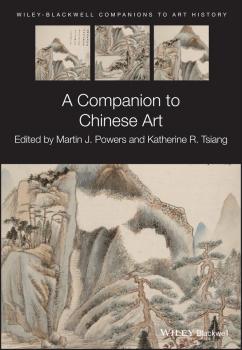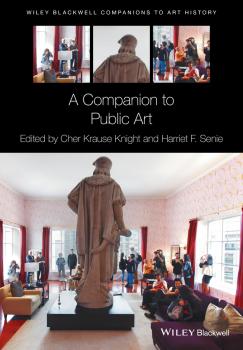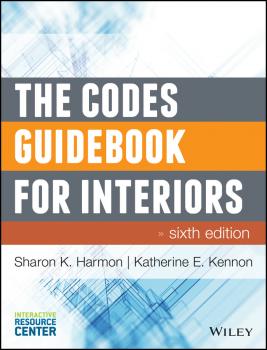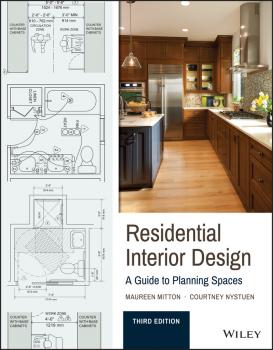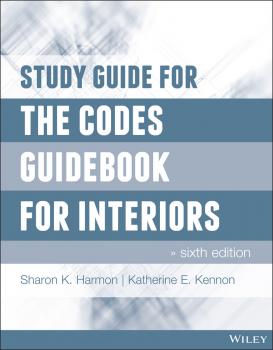Изобразительное искусство, фотография
Различные книги в жанре Изобразительное искусство, фотографияA Companion to Chinese Art
Exploring the history of art in China from its earliest incarnations to the present day, this comprehensive volume includes two dozen newly-commissioned essays spanning the theories, genres, and media central to Chinese art and theory throughout its history. Provides an exceptional collection of essays promoting a comparative understanding of China’s long record of cultural production Brings together an international team of scholars from East and West, whose contributions range from an overview of pre-modern theory, to those exploring calligraphy, fine painting, sculpture, accessories, and more Articulates the direction in which the field of Chinese art history is moving, as well as providing a roadmap for historians interested in comparative study or theory Proposes new and revisionist interpretations of the literati tradition, which has long been an important staple of Chinese art history Offers a rich insight into China’s social and political institutions, religious and cultural practices, and intellectual traditions, alongside Chinese art history, theory, and criticism
A Companion to Public Art
A Companion to Public Art is the only scholarly volume to examine the main issues, theories, and practices of public art on a comprehensive scale. Edited by two distinguished scholars with contributions from art historians, critics, curators, and art administrators, as well as artists themselves Includes 19 essays in four sections: tradition, site, audience, and critical frameworks Covers important topics in the field, including valorizing victims, public art in urban landscapes and on university campuses, the role of digital technologies, jury selection committees, and the intersection of public art and mass media Contains “artist’s philosophy” essays, which address larger questions about an artist’s body of work and the field of public art, by Julian Bonder, eteam (Hajoe Moderegger and Franziska Lamprecht), John Craig Freeman, Antony Gormley, Suzanne Lacy, Caleb Neelon, Tatzu Nishi, Greg Sholette, and Alan Sonfist.
Kitchen & Bath Products and Materials. Cabinetry, Equipment, Surfaces
Objective guidance on kitchen and bath fitting choice to suit any client and any space Kitchen and Bath Products and Materials describes the typical materials, equipment, and surfaces used in all facets of residential kitchen and bath design. Part of the National Kitchen and Bath Association's Professional Resource Library, this comprehensive reference is fully updated and expanded to include new technologies, materials, and finishes, with considerations of sustainability throughout. Full color illustrations and a revised design help visual learners better absorb the information, and the companion website provides an image bank and instructor's guide for classroom use. Each chapter includes a summary and review questions, allowing readers to test their grasp of the material at every step. Kitchen and bath design is the most popular and lucrative area within residential interior design. As such, the enormous amount of options available for surfaces, fixtures, and materials is far too vast to be navigated by taste and aesthetics alone. Kitchen and Bath Products and Materials provides the background designers need to choose what's best for the client and the space, based on a number of objective factors and technical details. This complete handbook allows readers to: Explore material options for storage systems, fixtures, fittings, and surfaces Become familiar with sizing systems, efficiency ratings, and certifications Consider factors like manufacturing processes, engineering, and configuration Learn the terms and nomenclature used to describe materials, fixtures, and appliances Design is about more than just aesthetics – whether the project is a remodel or new construction, there are codes, standards, and functional requirements that must be met. Kitchen and Bath Products and Materials is a practical reference, providing the information designers need to make informed decisions.
The Codes Guidebook for Interiors
The Interactive Resource Center is an online learning environment where instructors and students can access the tools they need to make efficient use of their time, while reinforcing and assessing their understanding of key concepts for successful understanding of the course. An access card with redemption code for the online Interactive Resource Center is included with all new, print copies or can be purchased separately. (***If you rent or purchase a used book with an access code, the access code may have been redeemed previously and you may have to purchase a new access code (ISBN: 9781118990179). The online Interactive Resource Center contains resources tied to the book, such as: Interactive Forms and Checklists Downloadable Bibliography Flashcards by chapter for focused learning Get up to speed on the latest codes with the complete reference for interiors. The Codes Guidebook for Interiors, Sixth Edition is the standards reference of choice for designers and architects, and the only guide devoted exclusively to codes applicable to interiors. With jargon-free explanations of all standards and regulations of concern to designers and architects, the book takes readers step-by-step through the codes relevant to each stage in the design process. The updated sixth edition features the latest information on fire codes, performance codes, building and finish standards, energy codes, and accessibility regulations, plus enhanced illustrations that clearly demonstrate how codes apply in real-life scenarios. Interior designers, architects, and facility managers need a basic understanding of the various codes involved with building interiors. These codes are updated on a continuous basis, and professionals must stay on top of new requirements and upcoming codes processes. The Codes Guidebook for Interiors is a complete reference, organized by stage for easy navigation, and comprehensive enough for use as a review for the NCIDQ and ARE exams. The sixth edition contains the most recent developments in interior codes and regulations, including: 2012 ICC codes, including the IBC, and ICC International Green Construction Code Coverage of changes to ADA standards and ICC/ASI accessibility requirements New standards, terminology, and federal regulations Updated information on sustainability as it relates to codes and regulations Having all applicable codes in a single resource saves hours of research time, and can dramatically reduce the potential for costly planning oversights. Whether renovation or new construction, small or large, codes apply to every project. The Codes Guidebook for Interiors provides designers with the comprehensive information they need to stay up-to-date.
Design Details for Health. Making the Most of Design's Healing Potential
Praise for Design Details for Health «Cynthia Leibrock and Debra Harris have developed a vitally important reference. They draw upon and compile a rich source of evidence that supports the application of specific research-based details for particular health-related settings.»—From the Foreword by Dr. Wayne Ruga, AIA, FIIDA, Hon. FASID The revised edition on implementing design details to improve today's health care facilities—an inspiring, comprehensive guide In this significantly revised second edition, Cynthia Leibrock and Debra Harris offer up-to-date information on design details that can improve patient outcomes and user experience by returning authority to the patient, along with fascinating case studies and research demonstrating the positive role design can play in reducing health care costs. Design Details for Health, Second Edition offers contemporary examples showing how design can improve patient comfort and independence, and demonstrates how to design highly functional health care facilities that operate at peak performance. The book addresses a range of health care facility types including hospitals, ambulatory care, wellness centers, subacute care and rehabilitation, adult day care and respite, assisted living, hospice, dementia care, and aging in place. This Second Edition includes: The latest research, which was only anecdotal in nature as recently as a decade ago, illustrating how design through evidence produces measurable outcomes Real-world case studies of a range of excellent health care facilities that have been designed and built in the twenty-first century Updated contributions with leading practitioners, researchers, and providers conveying how design has a positive impact on health care delivery When design empowers rather than disables, everybody wins. Sensitive to the needs of both patients and providers, Design Details for Health, Second Edition is essential reading for today's architects, interior designers, facility managers, and health care professionals.
A Companion to British Art. 1600 to the Present
This companion is a collection of newly-commissioned essays written by leading scholars in the field, providing a comprehensive introduction to British art history. A generously-illustrated collection of newly-commissioned essays which provides a comprehensive introduction to the history of British art Combines original research with a survey of existing scholarship and the state of the field Touches on the whole of the history of British art, from 800-2000, with increasing attention paid to the periods after 1500 Provides the first comprehensive introduction to British art of the eighteenth, nineteenth, and twentieth centuries, one of the most lively and innovative areas of art-historical study Presents in depth the major preoccupations that have emerged from recent scholarship, including aesthetics, gender, British art’s relationship to Modernity, nationhood and nationality, and the institutions of the British art world
Residential Interior Design. A Guide To Planning Spaces
A practical approach to planning residential spaces Residential Interior Design: A Guide To Planning Spaces is the industry-standard reference for all aspects of residential space planning, with a practical focus on accessible design, ergonomics, and how building systems affect each space. This new third edition has been updated with the most recent code information, including the 2015 International Residential Code and the International Green Construction Code, and new content on remodeling. Packed with hundreds of drawings and photographs, this book illustrates a step-by-step approach to design that applies to any residential space, and ensures that the most important factors are weighted heavily in the decision making process. Daily use is a major consideration, and the authors explore the minimum amount of space each room requires to function appropriately while examining the host of additional factors that impact bedrooms, bathrooms, kitchens, hallways, and more. Detailed information about accessibility is included in each chapter, making this book a reliable design reference for «aging in place» and universal design. The new companion website features teaching tools and a variety of learning supplements that help reinforce the material covered. Interior design is a fundamental component of a residential space, and a required skill for architecture and design professionals. This book is a complete reference on all aspects of residential design, and the factors that make a space «work.» Design spaces with primary consideration of daily use Account for building systems, accessibility, human factors, and more Get up to date on the latest residential interior building codes Plan interiors for any home, any style, and any budget Designing a residential interior is about more than choosing paint colors and furniture—it's about people, and how they interact and use the space. It's about shaping the space to conform to its function in the best possible way. Residential Interior Design provides clear, comprehensive guidance on getting it right every time.
Simplified Engineering for Architects and Builders
The bestselling structural design reference, fully updated and revised Simplified Engineering for Architects and Builders is the go-to reference on structural design, giving architects and designers a concise introduction to the structures commonly used for typical buildings. The clear, accessible presentation is designed to give you the essential engineering information you need without getting bogged down in excess math, making this book an ideal reference for busy design professionals. This new 12th edition has been completely revised to reflect the latest standards and practices. The instructor site includes a complete suite of teaching resources, including an instructor's manual and a PowerPoint presentation. Structural design is an essential component of the architect's repertoire, and engineering principles are at the foundation of every sound structure. You need to know the physics, but you don't necessarily need to know all of the math. This book gives you exactly what you need without losing you in a tangle of equations, so you can quickly grasp and apply the material. Understand fundamental concepts like forces, loading, and reactions Learn how to design for wood, steel, or concrete construction Study structural design standards and develop sound structural systems Determine the best possible solutions to difficult design challenges The industry-leading reference for over 80 years, Simplified Engineering for Architects and Builders is the definitive guide to practical structural design.
Study Guide for The Codes Guidebook for Interiors
Gain a reflexive knowledge of interior codes with this comprehensive study guide The Codes Guidebook for Interiors is the industry's reference of choice, with complete coverage of all codes and standards that apply to interiors. This Study Guide provides a thorough review of The Codes Guidebook, complete with practice questions, code tables, and checklists, helping designers and architects prepare for the NCIDQ and ARE exams. Designed as a companion to The Codes Guidebook 6th Edition, this guide covers the latest requirements, standards, terminology, and federal regulations, including the 2012 ICC, changes to the ADA standards, and ICC/ASI requirements—as well as expanded information on green construction. Readers get the opportunity to test their understanding of interior codes and think more deeply about real-world applications. It's essential that designers and architects have an up-to-date working knowledge of the various codes involved with building interiors, whether during renovation or new construction. This Study Guide helps increase retention and recall of the information presented in The Codes Guidebook, by enabling readers to: Learn key terms chapter by chapter Test code knowledge with practice questions and problem scenarios Refer to code tables during the design process Use included checklists to ensure complete compliance The Codes Guidebook is an essential reference for all interior professionals, and this Study Guide provides a concise review. Useful as exam prep or even just as a self-test, this guide distills the original's exhaustive information into manageable chunks. For the designer, architect, or student, the Study Guide for The Codes Guidebook for Interiors is a must-have resource for complete code comprehension.
A Companion to Islamic Art and Architecture, 2 Volume Set
The two-volume Companion to Islamic Art and Architecture bridges the gap between monograph and survey text by providing a new level of access and interpretation to Islamic art. The more than 50 newly commissioned essays revisit canonical topics, and include original approaches and scholarship on neglected aspects of the field. This two-volume Companion showcases more than 50 specially commissioned essays and an introduction that survey Islamic art and architecture in all its traditional grandeur Essays are organized according to a new chronological-geographical paradigm that remaps the unprecedented expansion of the field and reflects the nuances of major artistic and political developments during the 1400-year span The Companion represents recent developments in the field, and encourages future horizons by commissioning innovative essays that provide fresh perspectives on canonical subjects, such as early Islamic art, sacred spaces, palaces, urbanism, ornament, arts of the book, and the portable arts while introducing others that have been previously neglected, including unexplored geographies and periods, transregional connectivities, talismans and magic, consumption and networks of portability, museums and collecting, and contemporary art worlds; the essays entail strong comparative and historiographic dimensions The volumes are accompanied by a map, and each subsection is preceded by a brief outline of the main cultural and historical developments during the period in question The volumes include periods and regions typically excluded from survey books including modern and contemporary art-architecture; China, Indonesia, Sub-Saharan Africa, Sicily, the New World (Americas)
